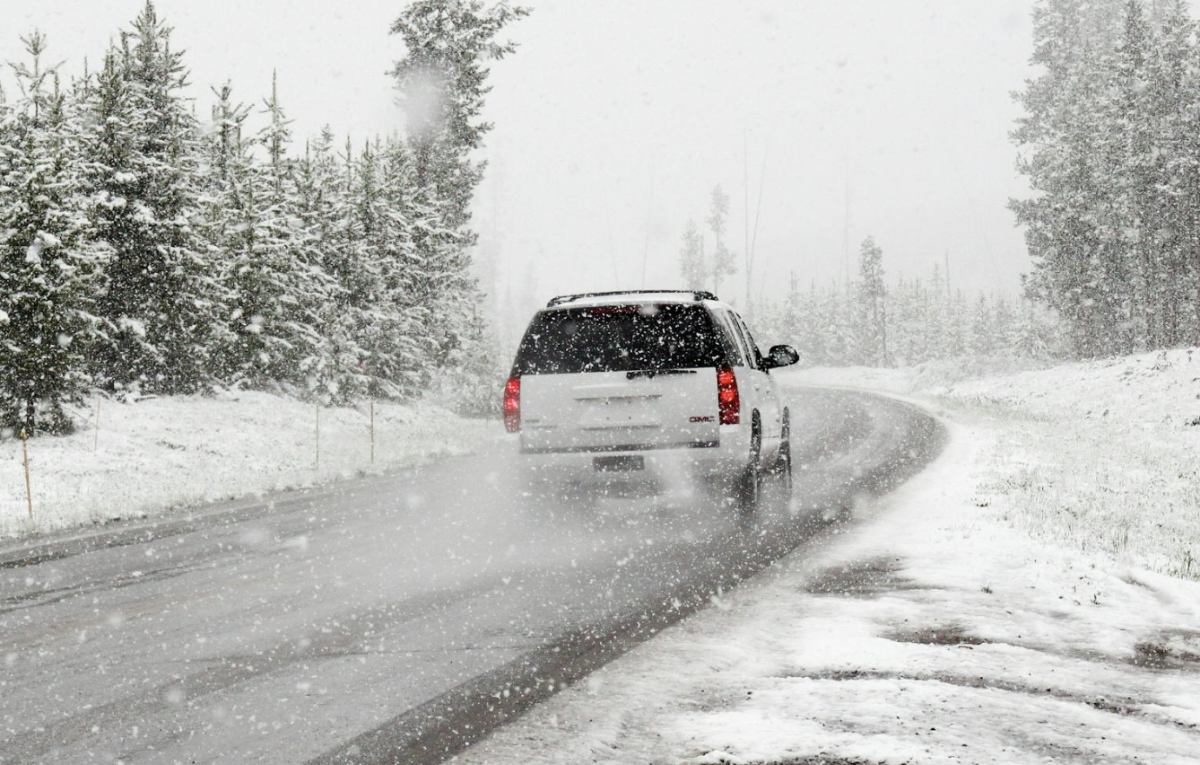
Those long winter warm-ups your father taught you? They're not just unnecessary—they're quietly draining your wallet and breaking the law in dozens of states. A Canadian mechanic's simple 30-second rule is changing how smart drivers approach cold morning starts, and the savings might surprise you.
Momo, a mechanic who shared his expertise on social media, wasn't just sharing a handy tip—he was backed by serious automotive science.
Modern engines are fully lubricated within 20 to 30 seconds, according to Consumer Reports' testing.
That's all the time needed for oil to reach the cylinder heads and fully protect your engine's moving parts.
The EPA and most automakers recommend skipping extended idling and instead driving off gently after letting the vehicle run for about 30 seconds.
The reason? Your engine will warm up faster being driven, which will allow the heat to turn on sooner, decrease your fuel costs, and reduce emissions.
Why 30 seconds is the magic number
The science behind the 30-second rule is straightforward.
Modern fuel-injected engines automatically adjust the air-fuel mixture based on temperature and conditions.
Unlike older carburetor-based systems, they don't need extended warm-up periods to function properly.
AAA automotive experts put it simply: "Start your engine and let it idle for just a moment—about the time it takes to buckle your seatbelt and adjust your mirrors."
This brief period is enough to circulate lubricating oil to all of the engine's critical components.
Watch your car's tachometer for confirmation.
When you first start your engine, the RPMs will be higher than normal — often around 1,200 to 1,500.
Once they drop to normal idle speed (typically 600–900 RPM), your engine is ready for gentle driving.
Also read: Stay warm this winter without turning up the heat—Walmart’s cozy $8.99 find
The expensive myth of long warm-ups
Here's what many drivers don't realize: personal vehicle idling wastes about 3 billion gallons of fuel each year in the US and generates around 30 million tons of carbon dioxide annually.
If you're letting your car idle for 10 minutes every cold morning throughout winter, you could be burning through an extra 20–30 gallons of gas per season.
The US Department of Energy found that idling your car for more than 30 seconds actually uses more fuel than restarting your engine.
That means every minute beyond the initial 30 seconds is money literally going up in exhaust fumes.
When the rules changed (and why your dad was right—then)
The confusion about warm-up times isn't your imagination.
Most vehicles built before 1995 used carburetors, which required several minutes of idling to function properly in cold weather.
If you learned to drive before the late 1990s, lengthy warm-ups were genuinely necessary.
But today's fuel-injected engines are completely different animals.
They automatically adjust the air-fuel mixture based on temperature and conditions, making those old warm-up routines not just unnecessary but counterproductive.
This technological shift means that advice passed down through generations—while once correct—now costs drivers money and harms the environment.
Understanding this change helps explain why your mechanic's advice might differ from what your father taught you.
Also read:Winter activity ideas to help seniors stay fit and energized
The legal reality you might not know
Here's something that could save you from an unwelcome surprise: more than 35 states and the District of Columbia have anti-idling regulations in place.
These laws vary by location, but many prohibit idling for more than a few minutes, especially in residential areas.
In some states, leaving your car running unattended—even to warm up—can result in fines ranging from $50 to $500.
Some jurisdictions can even have your vehicle towed.
Before you establish any winter routine, check your local regulations.
Also read:15 Winter vacation spots seniors will love—from cozy retreats to sunny escapes
Special winter considerations for safety
While 30 seconds handles your engine's needs, there are legitimate reasons to idle a bit longer.
AAA notes that in colder weather, it's fine to let your car idle while you scrape frost or ice from windows and windshield.
Safety always trumps fuel efficiency.
Take the time you need to clear your windows completely and ensure good visibility before driving.
Just remember that once your windows are clear and your RPMs have dropped to normal levels, you're ready to go.
Also read: Don’t let winter slow you down—simple habits to keep your bones and joints happy
Signs your engine is ready to drive
Knowing when your engine is properly prepared doesn't require guesswork.
Modern cars provide clear indicators that the initial lubrication period is complete.
Source: YouTube / @apexautoapp
Also read: Mom's 6 creative winter solutions from Dollar Tree—stay warm for under $9!
Beyond the 30-second rule—complete winter prep
Smart winter driving extends beyond warm-up times.
Here are the essential preparations that matter more than extended idling.
1. Battery and electrical checks: Cold weather is hard on batteries. Have yours tested before winter hits—most auto parts stores do this free.
A weak battery that barely starts your car in fall will likely fail completely when temperatures plummet.
2. Tire preparation: Check tire pressure monthly in winter—cold air causes pressure to drop about 1 PSI for every 10-degree temperature decrease.
Consider winter tires if you live in snow country, as they provide significantly better traction below 45°F.
3. Fluid maintenance: Ensure your antifreeze mixture can handle your area's lowest temperatures. op off windshield washer fluid with winter-grade solution that won't freeze.
4. Check your oil viscosity: some climates benefit from thinner winter-weight oil.
Also read: Drivers beware: The winter car problem you didn’t know you had—solved!
How to implement the 30-second rule
Making this change is simpler than you think.
Here's your new morning routine.
- Start your car.
- Fasten your seatbelt.
- Adjust your mirrors and seat.
- Check that your windows are clear.
- Confirm RPMs have dropped to normal.
- Drive gently for the first few minutes.
In extremely cold conditions (below zero), you might extend this to a minute or two, but that's still far less than the 10–15 minute warm-ups many drivers use.
Remember: gentle acceleration and avoiding high speeds initially is more important than extended idling.
The bottom line on winter efficiency
This isn't just about following the latest automotive trend—it's about practical savings and responsible driving.
Every gallon you don't waste idling is money in your pocket and cleaner air for everyone.
Plus, you'll actually get heat in your car faster by driving rather than sitting still.
The 30-second rule represents a perfect example of how automotive technology has outpaced conventional wisdom.
By understanding and adapting to these changes, you can save money, protect your engine, and stay on the right side of the law.
What This Means For You
The next time you're tempted to let your car idle for 10 minutes on a cold morning, remember that 30 seconds of patience followed by gentle driving will get you warm, save money, and protect your engine just as effectively.
Read next:
- Transform your winter driving with this unexpected shaving cream trick!
- Beat winter's hidden dangers: Your complete guide to staying safe when temperatures drop
- A senior’s guide to preventative care during the colder months
What's your winter warm-up routine been like? Have you tried the shorter approach, and did you notice a difference in your fuel bills? Share your cold-weather driving experiences in the comments below—your insights might help fellow drivers save money and stay safe this winter.
Primary Source
https://www.the-sun.com/motors/15309059/mechanic-30-second-rule-heating-up-car-saving-gas/
Should You Warm Up Your Car Before Driving? via @ConsumerReports
Cited text: Cars have improved in technology to the point where your engine is fully lubricated within 20 to 30 seconds.
Excerpt: Modern engines are fully lubricated within 20 to 30 seconds
https://www.consumerreports.org/car...-warm-up-your-car-before-driving-a5580016349/
Should You Warm Up Your Car in Winter? | Cars.com
Cited text: According to EPA research, most automakers recommend to skip idling and instead drive off gently after letting the vehicle run for about 30 seconds.
Excerpt: The EPA and most automakers recommend skipping extended idling and instead driving off gently after letting the vehicle run for about 30 seconds
https://www.cars.com/articles/should-you-warm-up-your-car-in-winter-429809/
Do you actually need to let your car warm up in winter?
Cited text: “The engine will warm up faster being driven, which will allow the heat to turn on sooner, decrease your fuel costs, and reduce emissions,” the federa...
Excerpt: Your engine will warm up faster being driven, which will allow the heat to turn on sooner, decrease your fuel costs, and reduce emissions
https://wgntv.com/news/trending/do-you-actually-need-to-let-your-car-warm-up-in-winter/
Should You Warm Up Your Car in Winter? | Cars.com
Cited text: It also reports that personal-vehicle idling wastes about 3 billion gallons of fuel each year in the U.S. and generates around 30 million tons of carb...
Excerpt: personal vehicle idling wastes about 3 billion gallons of fuel each year in the U.S. and generates around 30 million tons of carbon dioxide annually
https://www.cars.com/articles/should-you-warm-up-your-car-in-winter-429809/
Is it necessary to let your car warm up?? | Todd Wenzel Chevrolet of Hudsonville
Cited text: According to the US Department of Energy, idling your car for more than 30 seconds can actually use more fuel than restarting your engine.
Excerpt: The US Department of Energy found that idling your car for more than 30 seconds actually uses more fuel than restarting your engine
https://www.toddwenzelchevrolet.com/is-it-necessary-to-let-your-car-warm-up/
Experts weigh in: Do you need to warm up your car in cold weather?
Cited text: Most vehicles built before 1995 used a carburetor, a device that combined air and fuel.
Excerpt: Most vehicles built before 1995 used carburetors
https://www.accuweather.com/en/weat...-to-warm-up-your-car-in-cold-weather-2/433065
How Long Should You Let Your Car Warm Up in the Winter Cold? - AutoZone
Cited text: More than 35 states and the District of Columbia have anti-idling regulations in place.
Excerpt: more than 35 states and the District of Columbia have anti-idling regulations in place
https://www.autozone.com/diy/seasonal/warming-up-your-car-winter-start-up
How Long To Warm Up The Engine Before Driving | AAA Automotive
Cited text: In colder weather, feel free to let your car idle a bit longer while you scrape frost or ice from the windows and windshield.
Excerpt: AAA notes that in colder weather, it's fine to let your car idle while you scrape frost or ice from windows and windshield
https://www.aaa.com/autorepair/articles/how-long-to-warm-up-the-engine-before-driving






